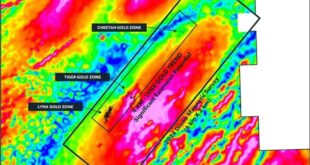With drone technology advancing rapidly and costs plummeting, drones have seamlessly integrated into a multitude of sectors, ranging from photography and agriculture to disaster response and military applications. The number of drones operating in the skies above the U.S. has gone from 277,000 in 2018 to over 1.1 million drones registered in 2023.
Drones bring about exciting opportunities for us as a society, from retail and medical delivery to property maintenance and inspection. However, as with any technology, there is a flip side: the potential misuse of drones in the form of security threats to critical infrastructure. As our world becomes increasingly interconnected, the need to monitor and mitigate these threats has never been more pressing. Any disruption to these vital systems can have catastrophic consequences, affecting public safety, economic stability, and overall well-being. Drones, due to their agility, stealthiness, and ability to carry payloads, have emerged as a potential tool for those with nefarious intentions.
The Rising Threat Landscape
Given the expanding use of drones, critical infrastructure facilities must take proactive measures to address the hazards stemming from heedless or malevolent drone operators. They can be used for espionage, smuggling contraband, carrying explosive payloads, or causing physical damage to critical infrastructure. The anonymity and ease of drone operation empower both state and non-state actors to exploit vulnerabilities in security systems.
The widespread availability of drones opens a misconception that anyone using a drone for criminal activity must be considered a highly sophisticated threat, but that’s not necessarily true. Some threats are presented in a fairly straightforward manner, and with the right technology, drone usage can be quickly and easily detected and tracked, even to the point of knowing where the drone originated and its current flight path. This technology also can pinpoint the drone operator’s location, allowing authorities to take the necessary steps to subdue the threat. Implementing a robust drone detection network is essential to counter this emerging threat.
Airspace awareness is an important part of critical infrastructure monitoring. With it, users are kept informed of their airspace and are quickly alerted to the presence of unauthorized drone activity that could disrupt services, whether from negligent drone operators or those looking to plot and carry out an act of terrorism on the facility. Drone awareness solutions provide the critical data to create the most robust view of drone operations, including historical flights and patterns of behavior across an interconnected network of detection areas. By leveraging drone defense security solutions for critical infrastructure, users can remain aware of their airspace to protect the crew and the facility.
Monitoring for Early Detection
A system designed to spot and monitor drones is essential for safeguarding against illicit drone operations. An inclusive monitoring system should be cloud-based, combining radio frequency (RF) sensors with the intelligence capability to see historical data, real-time information, and forensics. These elements are essential to detect and trace numerous potential risks from drones.
Implementing a drone awareness solution offers several advantages for safeguarding critical infrastructure:
1. Early Threat Detection: By providing real-time alerts, the network enables swift response to unauthorized drone activity, allowing security personnel to initiate appropriate countermeasures promptly.
2. Enhanced Situational Awareness: An inclusive monitoring service enhances situational awareness by providing a complete view of drone activities. This enables security teams to analyze patterns, identify potential threats, and develop effective response strategies based on historical information.
3. Minimized Disruptions: By detecting drones before they reach certain facilities, the network minimizes disruptions to ongoing operations, allowing for continuous productivity and maintaining safety standards.
4. Scalability and Integration: Leveraging a drone detection monitoring network allows for scalability and integration with existing security systems. This flexibility lends itself to seamless integration into the overall security infrastructure.
Detection and Tracking
Data pulled from the inclusive monitoring system is invaluable to help accurately ascertain the location of the drone operator, aiding the appropriate authorities in detaining the operator and mitigating the danger. A monitoring system ensures that real-time alerts to the chain of command status are conveyed through automated text messages and online notifications disseminated across the entire organization. Moreover, by scrutinizing the historical movement patterns of a drone, users can gain valuable insights into its customary flight paths, identifying recurring and habitual violators of airspace regulations. This paves the way for devising the necessary strategies to counter future threats, including the immediate generation of legally viable reports shortly after an incident.
A drone monitoring system is equipped to pinpoint and track unsanctioned drone operations, thereby neutralizing threats and bestowing critical infrastructure facilities with the ability to regulate and safeguard their airspace. This proactive stance will augment security for some of the world’s most precious assets, ensuring uninterrupted operations and affording reassurance to those overseeing critical infrastructure in an increasingly drone-saturated environment.
The Role of Regulations and Collaboration
In the near future, the Federal Aviation Administration (FAA) will mandate that all unmanned aircraft systems (UAS) requiring registration are in compliance with the UAS Remote Identification (Remote ID) standard. Remote ID allows drone operators to broadcast their ID number, location and altitude, drone velocity, takeoff location, elevation, and a timestamp while the aircraft is in flight. This data allows approved public safety organizations to identify the aircraft owner without revealing personally identifiable information (PII) in the public domain.
While this is a step forward in safeguarding our skies, there remains a need to define the next step of how law enforcement can mitigate risks effectively. While systems are monitoring the airspace, they need to have the ability to pull value and historical data along with the real-time information received.
Looking Ahead
Education and awareness are essential in navigating the evolving landscape of drone threats and their management. As drones continue to transform industries, they also challenge us to rethink security paradigms. To safeguard critical infrastructure from potential threats, a cloud-based system is necessary. This includes employing cutting-edge detection systems, refining measures against rogue drone activity, and fostering international collaboration to share best practices. By staying ahead of potential threats, we can ensure that the skies remain safe, allowing us to harness the benefits of drone technology without compromising our critical infrastructure’s integrity.
Author: Grant Jordan
CEO, SkySafe
www.skysafe.io
After graduating from MIT, Grant Jordan served as an officer in the US Air Force for four years. At the Air Force Research Lab, he designed and built hardware systems for counter-IED missions and small UAVs, specializing in rapid product development for Special Forces units. In graduate school at UC San Diego, Grant conducted research in online criminal campaigns and analysis of the Bitcoin network. As President of Somerset Recon, he led a team of security researchers and engineers analyzing the security of hardware systems for government and commercial customers. Grant has spoken at numerous conferences, including DEFCON and the Commercial UAV Expo.
Printed in the 2023 Issue of UAS Magazine
 Unmanned Aerial Vehicle The latest drone news
Unmanned Aerial Vehicle The latest drone news




